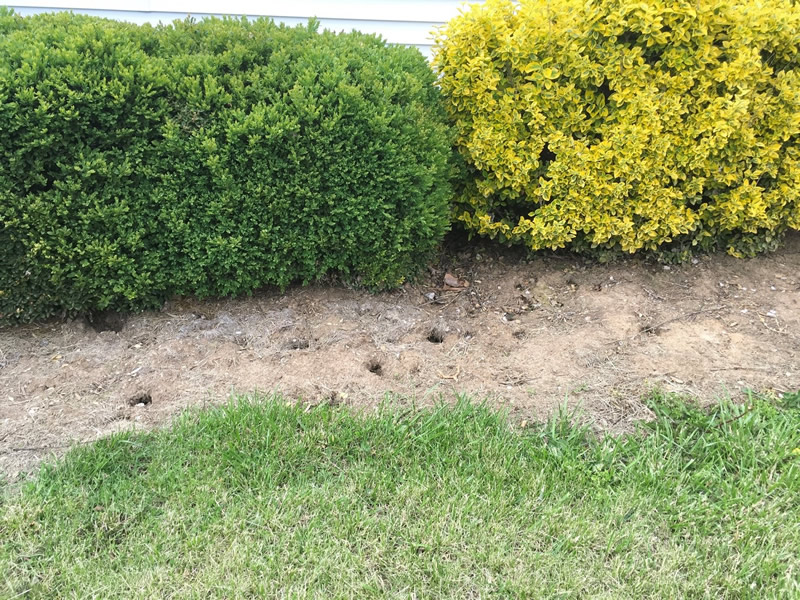Issue 3, May 20, 2020
Turf Wars with Tunnellers
Voles can be a landscaper’s worst nightmare. The damage can include extensive tunnel systems above and below ground, holes throughout the yard, plants destroyed or damaged and worn grassless paths scattered across the turf. Voles have a short life span of 2-16 mos and reach sexual maturity at just three weeks of age. Their gestation, depending on species, can be 21-24 days. Having multiple generations through March to November with 3-6 babies per litter, the population growth is quick.
We might believe that voles couldn’t possibly serve a single purpose in life, but they have some pretty important roles in the ecosystem. They aid in soil formation, move nutrients and are a food source for many predators. These predators include hawks, coyotes, skunks, heron, and bobcats. They are a critical part of the food chain.
Understandable conflicts arise when they move into the landscape. They can get into and occupy structures, eat plants we don’t want them to eat, pose a physical risk to humans as well as cause crop/plant damage. Our first instinct might be just to trap and relocate them. This seems like the kinder option, but in the long run, it is not a kind solution. When these animals are trapped and then moved, they can starve or fall easily to predators. They can disrupt a resident population and increase the risk of spreading disease. There is the ethical issue of moving them, and in some cases, it may be illegal. Translocation is not a good option.

Vole holes in a landscape bed
Some basic tactics can reduce or prevent intrusion. We should anticipate their presence and attempt to prevent them from creating homes in the landscape. We can do this by blocking their entry (fencing or raised beds, hardware cloth- not chicken wire) in areas that we want to protect. We can also use some repellents to help deter. This will stop them by taste or smell, but many of these repellents are only effective on the above-ground plant parts. The products often need to be rotated since animals will persist feeding on food that is known to be good. Rain and sun can also degrade the products and reapplication are necessary to remain active./
Modify the habitat to reduce the capacity; this can be done by reducing vegetative cover. Reduce heavy mulch and dense vegetative cover in areas in the lawn that would provide adequate shelter for the voles. Go native! Our native plants survived all these years for a reason, and they can tolerate some damage without our intervention. We can also scale our expectations.
Trapping voles can be done with snap mouse traps baited with some peanut butter and oatmeal. These must be placed near the run or hole but should not be placed too far away as voles tend not to stray far from the path. Trapping can work but toxicants can be more effective. If you choose to use toxicants, you must follow the label instruction as it is the law. Be sure to wear proper PPE that is required. Be cautious as you use pesticides as could be liable for injury or damage unintended organisms.
Lastly, they are eaten by pretty much anything. Encouraging predators will help to reduce the population.
Sources-
Dueling with Diggers Webinar- Dana Sanchez, wildlife specialist
http://ipm.ucanr.edu/PMG/PESTNOTES/pn7439.html
Author:
Maria Turner